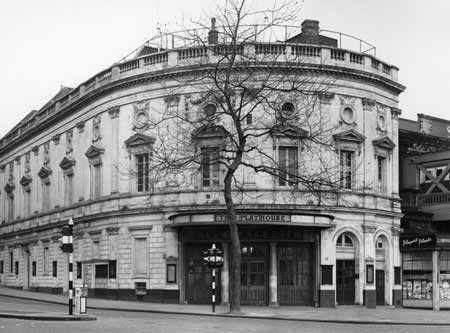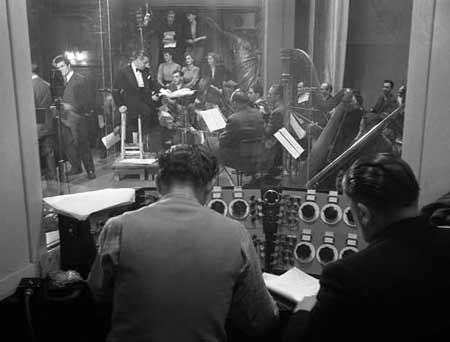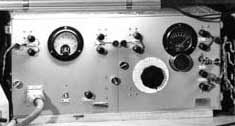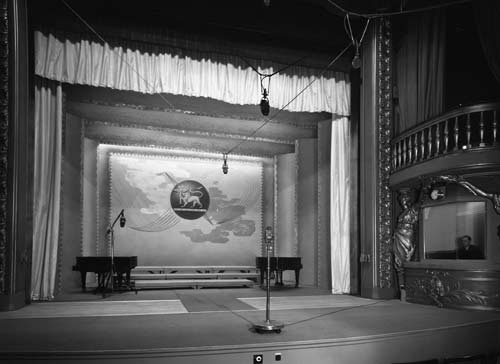
The interior was remodelled and the theatre reopened in 1907 as The Playhouse. Acquired by the BBC in 1951 it was used for comedy shows (including "The Navy Lark" and "Hancock's Half-Hour") and music recording until the mid 1970s. It was also used for live broadcasts including the Monday, Wednesday and Friday lunchtime popular music programmes. These included, at various times, The Joe Loss Show, “Monday, Monday” with Ray McVay and his band, “Parade of the Pops” (Wednesday) with Bob Miller and the Millermen and “Go, Man, Go” (Friday) (Band unknown). On Wednesday afternoons following Parade of the Pops the Johnny Howard Band came in to record Saturday Club with Brian Matthew.

The view of the original Cubicle (with the stage beyond) shows what, at first sight, appears to be a standard OBA/8 and MX/18 installation. In fact the unit to the left appears to be the same as the right half of the unit shown below, presumably a two-box version of the OBA/8.

Later (before 1963) a new Control Cubicle was situated to the right of the entrance lobby. The Control Room, which was equipped for local recording, was to the left, with good visual contact across the lobby. Even the new Cubicle was rather small, and was equipped with
The Playhouse, Manchester
The console faced the window into the auditorium, and had an extension to the left to house the 12 RSAs (Type AM1/4, see NOTE), PA controls and echo mixture switches etc. The LSU10 monitor loudspeaker was at the end of this, leaving just enough room to squeeze through to access the wall-mounted jackfield

The studio in 1954. The control cubicle is seen to the
right of the stage.
NOTE: until some minor refurbishments in ?1963/4, which included the provision of Universal Mic Points, there were only four RSAs available; these were an earlier type, with in/out switching via a Kellog key, and they were hard-wired to channels 1, 2, 6 and 7.
After the BBC left the theatre's future was in doubt until it was restored to its 1907 design and reopened in 1987.
If you have memories or photos of this studio which could be added to this page please get in touch using the 'Contact' link below.

